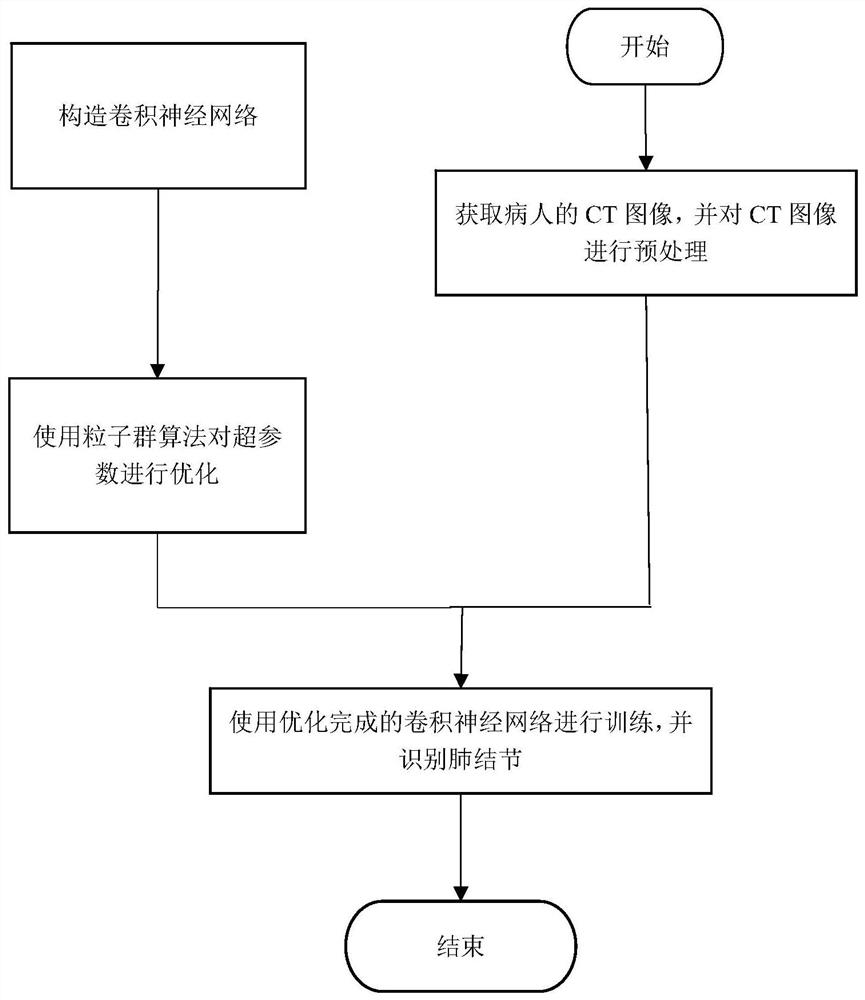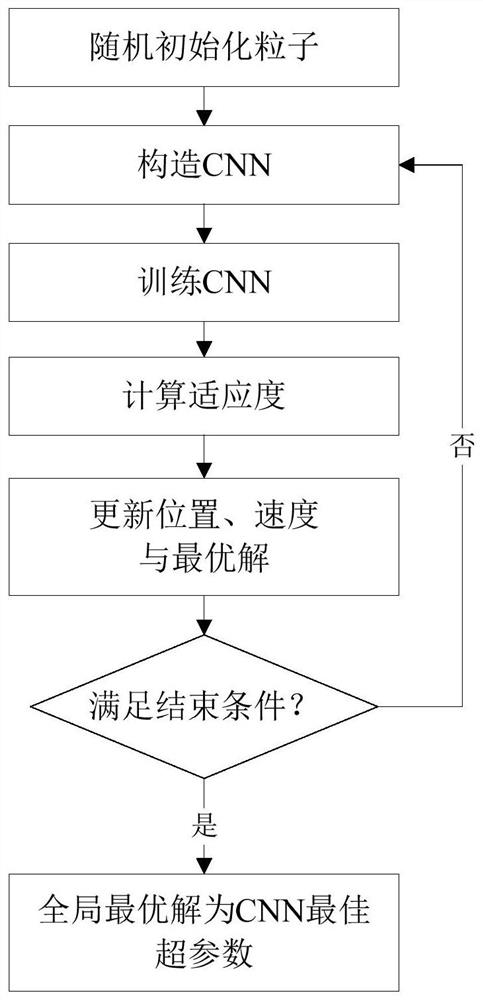Particle swarm optimization-based convolutional neural network identification method for pulmonary nodules
A convolutional neural network and particle swarm algorithm technology, applied in the field of artificial intelligence and medical image analysis, can solve problems such as difficulty in manual selection, achieve good recognition effect, speed up learning speed and learning effect.
- Summary
- Abstract
- Description
- Claims
- Application Information
AI Technical Summary
Problems solved by technology
Method used
Image
Examples
Embodiment Construction
[0017] The technical solution of the present invention will be described in detail below in conjunction with the accompanying drawings and examples, but the embodiments of the present invention are not limited thereto.
[0018] In this embodiment, the method for identifying pulmonary nodules based on the convolutional neural network optimized by the particle swarm optimization algorithm, such as figure 1 , 2 As shown, the method includes the following steps:
[0019] S1. Obtain a CT slice image of the patient's lungs;
[0020] S2. Preprocessing the CT slice images, annotating the acquired CT slice images to form a data set;
[0021] S3. Constructing a convolutional neural network CNN;
[0022] In this embodiment, the convolutional neural network CNN includes an input layer, a hidden layer, and an output layer. The input layer, the hidden layer, and the output layer are fully connected layers, and the output layer uses Softmax as the output activation function. The hidden la...
PUM
 Login to View More
Login to View More Abstract
Description
Claims
Application Information
 Login to View More
Login to View More - R&D
- Intellectual Property
- Life Sciences
- Materials
- Tech Scout
- Unparalleled Data Quality
- Higher Quality Content
- 60% Fewer Hallucinations
Browse by: Latest US Patents, China's latest patents, Technical Efficacy Thesaurus, Application Domain, Technology Topic, Popular Technical Reports.
© 2025 PatSnap. All rights reserved.Legal|Privacy policy|Modern Slavery Act Transparency Statement|Sitemap|About US| Contact US: help@patsnap.com



